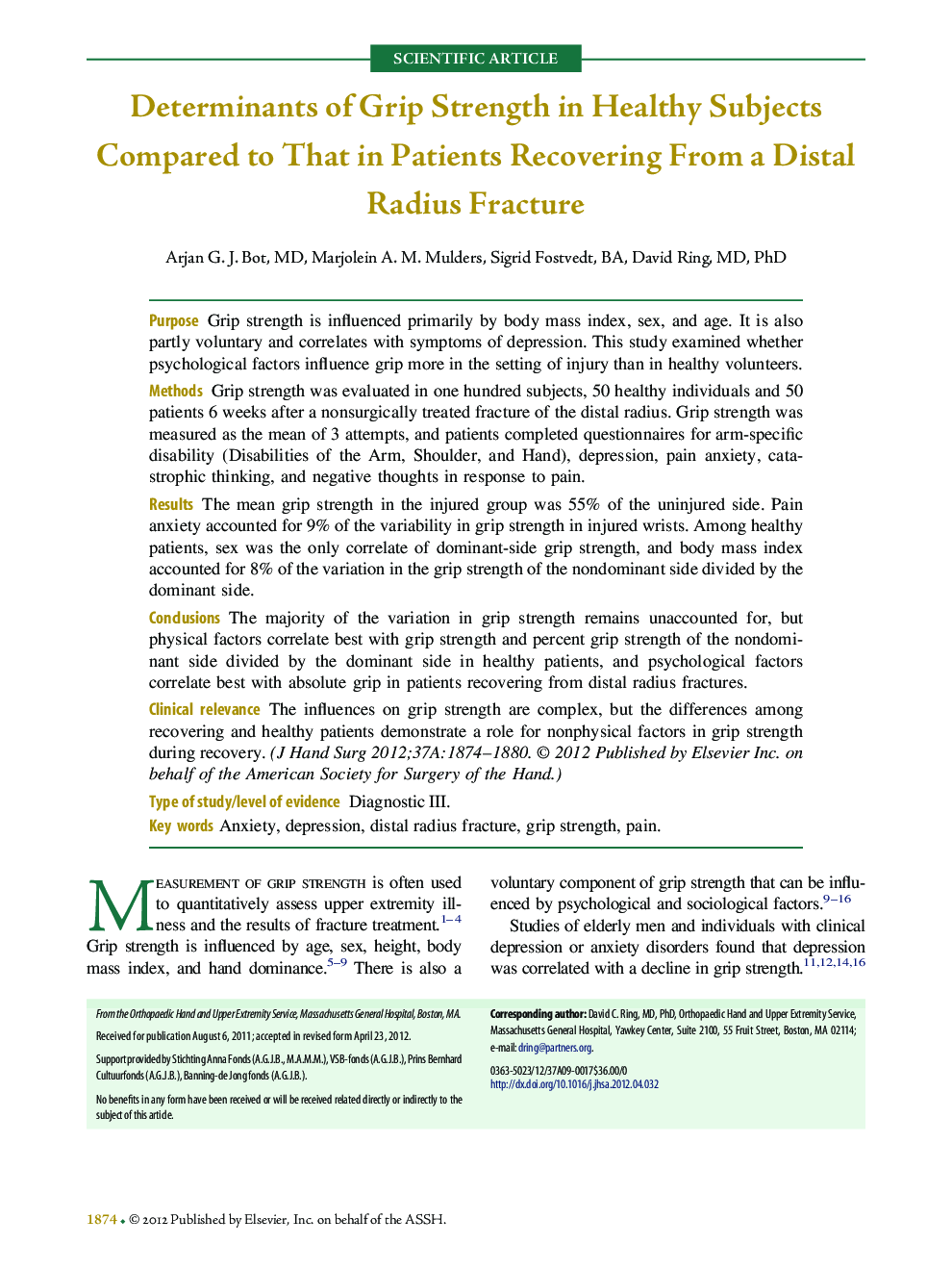| Article ID | Journal | Published Year | Pages | File Type |
|---|---|---|---|---|
| 4067300 | The Journal of Hand Surgery | 2012 | 7 Pages |
PurposeGrip strength is influenced primarily by body mass index, sex, and age. It is also partly voluntary and correlates with symptoms of depression. This study examined whether psychological factors influence grip more in the setting of injury than in healthy volunteers.MethodsGrip strength was evaluated in one hundred subjects, 50 healthy individuals and 50 patients 6 weeks after a nonsurgically treated fracture of the distal radius. Grip strength was measured as the mean of 3 attempts, and patients completed questionnaires for arm-specific disability (Disabilities of the Arm, Shoulder, and Hand), depression, pain anxiety, catastrophic thinking, and negative thoughts in response to pain.ResultsThe mean grip strength in the injured group was 55% of the uninjured side. Pain anxiety accounted for 9% of the variability in grip strength in injured wrists. Among healthy patients, sex was the only correlate of dominant-side grip strength, and body mass index accounted for 8% of the variation in the grip strength of the nondominant side divided by the dominant side.ConclusionsThe majority of the variation in grip strength remains unaccounted for, but physical factors correlate best with grip strength and percent grip strength of the nondominant side divided by the dominant side in healthy patients, and psychological factors correlate best with absolute grip in patients recovering from distal radius fractures.Clinical relevanceThe influences on grip strength are complex, but the differences among recovering and healthy patients demonstrate a role for nonphysical factors in grip strength during recovery.Type of study/level of evidenceDiagnostic III.
